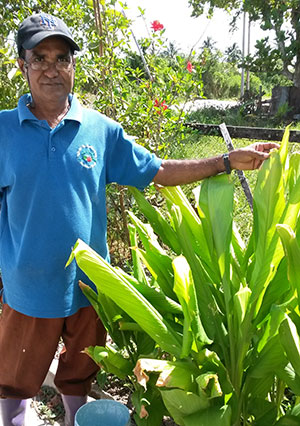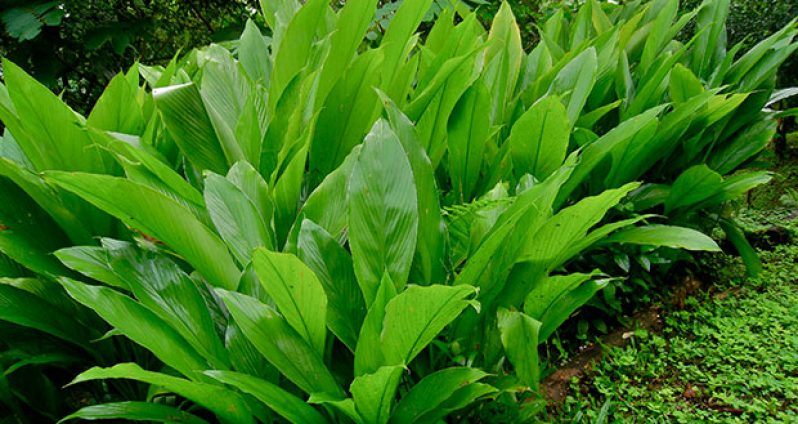Turmeric, scientific name Curcuma longais has been described as the most effective nutritional supplement on the planet and a herb with great medical benefits which can be easily grown in your backyard.
Tumeric is a cousin of ginger.
As one of the most fetching culinary spices, turmeric has an intense golden hue.

It is the major ingredient in Indian curries and is the component responsible for curry’s dizzying colour.
It’s also commonly used to imbue mustard with its radiant glow.
Europeans and South Asians have been cultivating the plant and using it for over five thousand years for treating themselves to some delicious curries as well as treating ailments.
In India almost all Indian vegetable dishes use turmeric either separately or as part of the massala (spice mixture).
It is also used in recipes comprising rice, lentils and dry beans: a small pinch of turmeric powder is enough to add a pleasant orange-yellow hue to salad dressings.
Website Rainforest Garden says that turmeric might be one of the world’s healthiest foods; so healthy in fact that it wouldn’t hesitate to call it a miracle drug.
The root of turmeric is used widely to make medicine for treatment of arthritis, heartburn (dyspepsia), stomach pain, diarrhoea, intestinal gas, stomach bloating, loss of appetite, jaundice, liver problems and gallbladder disorders.
It is also used for headaches, bronchitis, colds, lung infections, fibromyalgia, leprosy, fever, menstrual problems, and cancer. Other uses include depression, Alzheimer’s disease, water retention, worms, and kidney problems.
Some people apply turmeric to the skin for pain, ringworm, bruising, leech bites, eye infections, inflammatory skin conditions, soreness inside of the mouth, and infected wounds.
Other reliable sources online says that turmeric not only contains a healthy serving of iron and manganese, but has proven itself as a cancer treatment, both preventing and destroying cancerous cells.
Curcumin, turmeric’s active ingredient lowers cholesterol by working in tandem with the liver to remove harmful cholesterol from the body.
These are just to name a few of the too numerous to mention evidence based benefits of turmeric.
Think of it as Motrin, but with none of the harmful side effects. (Rainforest Garden)
The turmeric plant looks just as great in the garden as it tastes on the table.
The whole plant is edible; the roots can be boiled, dried and ground up to produce turmeric powder, the leaves make a wrap for steamed fish, and even the flowers can be eaten as an exotically beautiful vegetable, like lettuce with a kick.
Who grows this plant says that anyone can grow it their own provided it receives enough moisture.
Turmeric will handle anything you throw at it, returning from drought and sailing through floods.
Turmeric can grow in full sun, but only if the soil remains constantly wet.
Otherwise, provide midday shade since if the plant is stressed by drought or too much sun the leaves will hang limp and develop burnt tips.
But turmeric powder and roots are readily available at a few grocery stores and supermarkets in Georgetown but most notably so at N&S Mattai and Company at 4 Water Street Cummingsburg.
.(To Be Continued)
(By Clifford Stanley)





.jpg)








